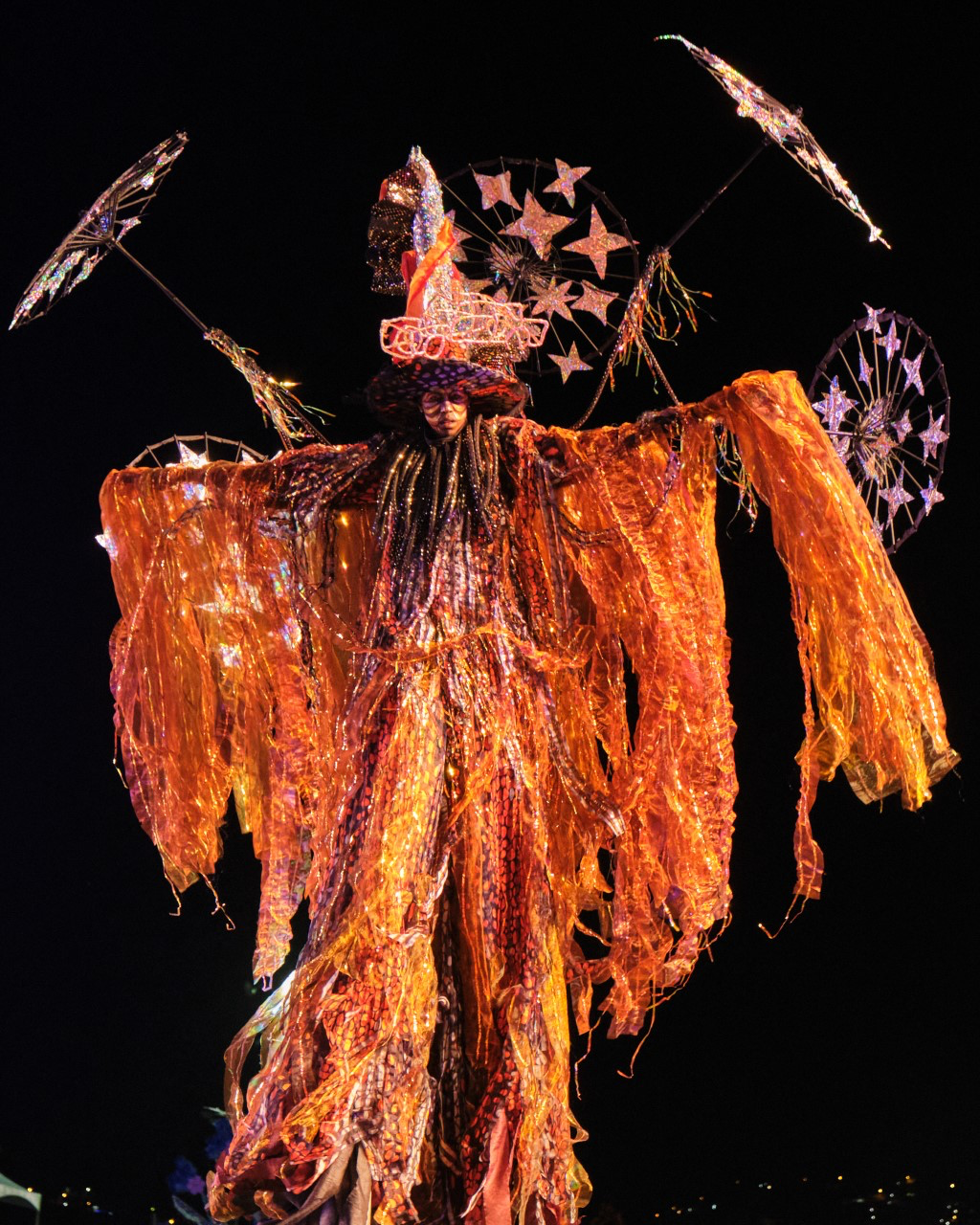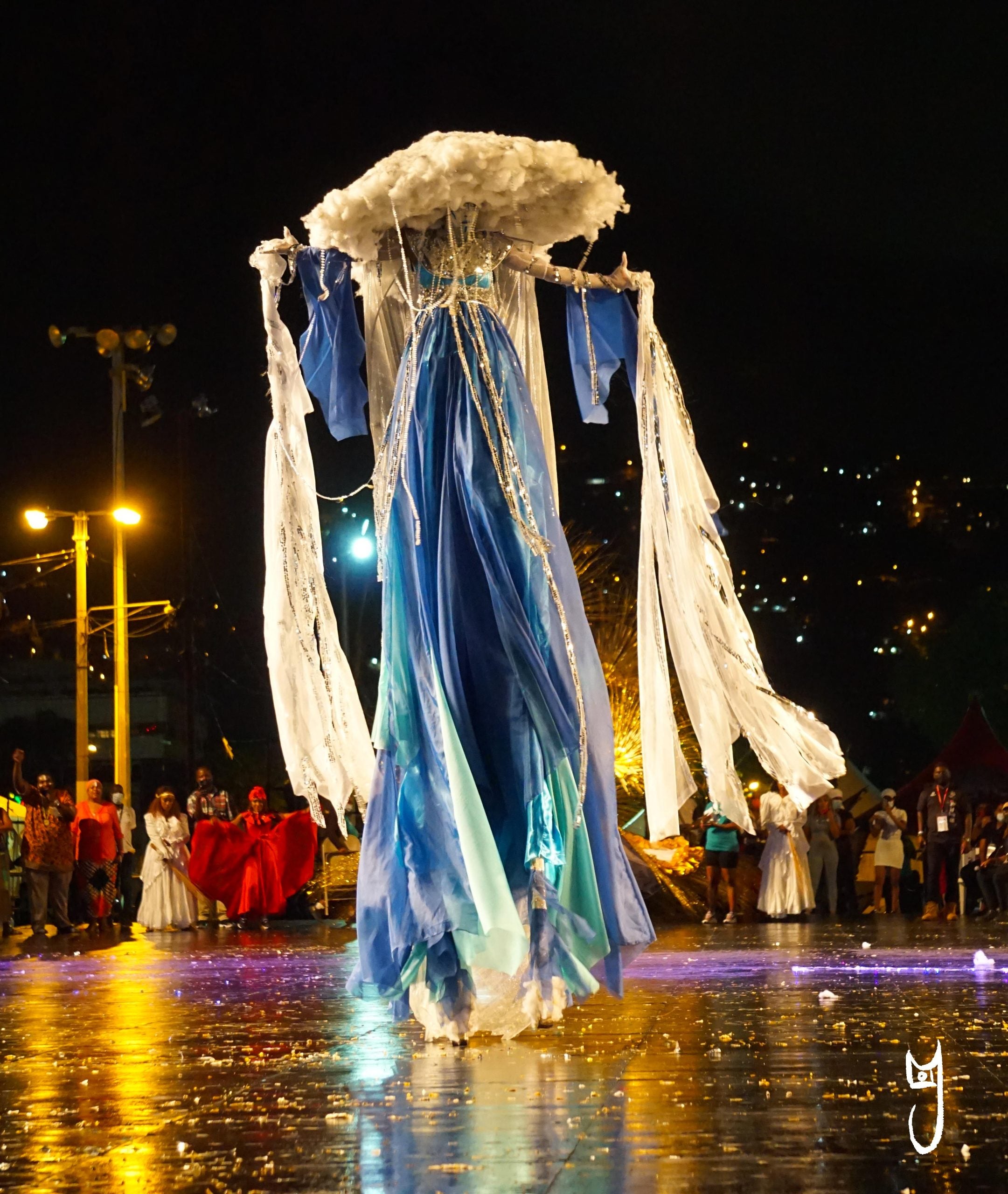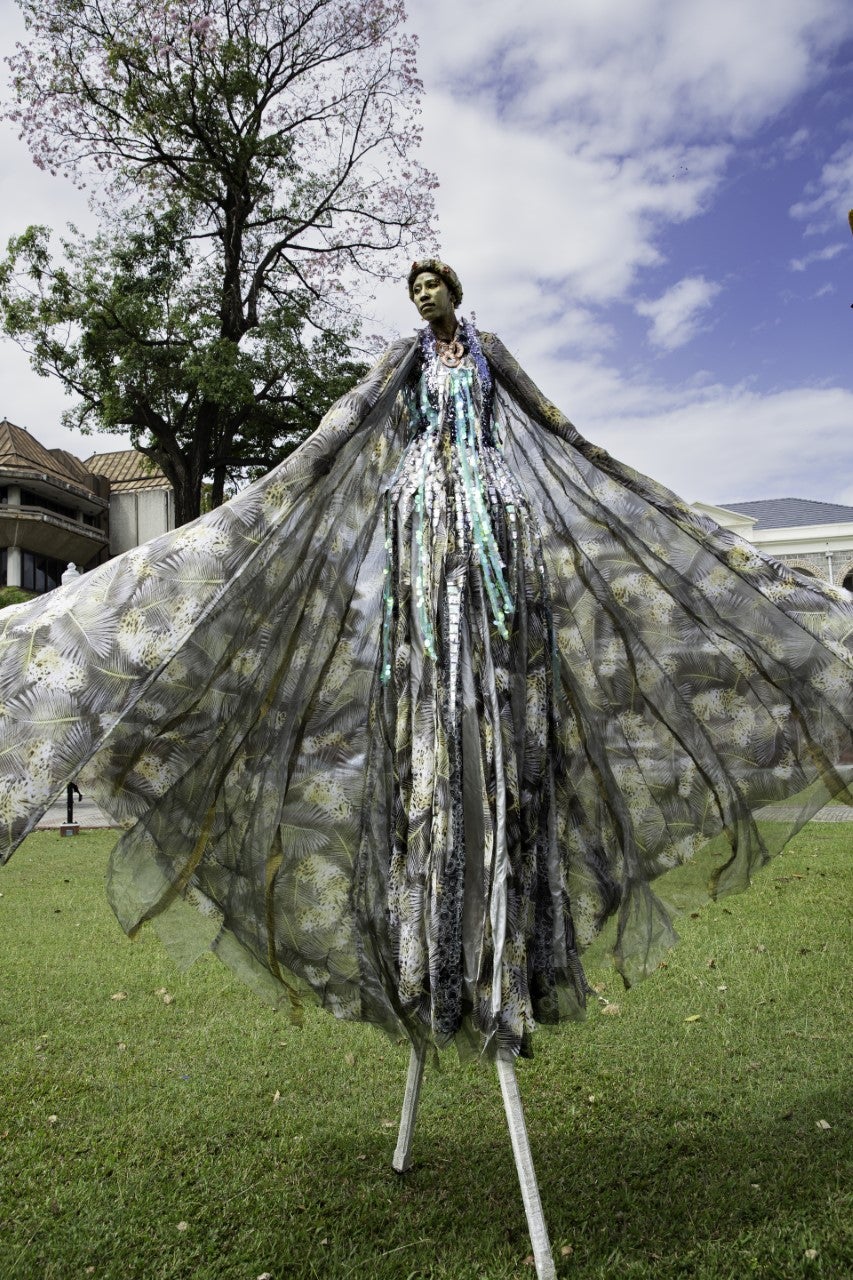
PORT OF SPAIN, Trinidad – Shynel Brizan remembers her first Kings and Queens of Carnival competition like it was yesterday. It was 2012. She was 19 years old and still relatively new to the moko jumbie (stilt walking) art form, which she started about four years prior. Brizan was nervous because she wanted to ensure she represented her band well and embodied the true essence of a moko.
“I felt a bit intimidated because I was seeing huge costumes, and it was just me, this little person on the stage with not much of a costume because it was my first time,” Brizan says. “It wasn’t enough to make the finals that year, but I used the time as a lesson on what to change and how to stand out as a moko,” says the former boxer introduced to the art form by a coach.
Since then, Brizan has gone on to become a leader in the carnival band she is a part of and competes with called Moko Somõkõw, which translates to “moko family.” She has won two queen titles during Trinidad’s world-famous carnival dubbed “The Greatest Show on Earth.”
“We all sacrifice and spend a lot of time together and away from our loved ones, especially during those two months during the carnival season,” she says. “Everyone knows everyone and is there for each other, so it’s not just a band. It is a family.”
Brizan, now 30 and a mom of three, has also performed in Grenada, Dominica and England over the course of a 14-year career she says she never expected. “I didn’t have intentions of making a career out of this. It was just a sideline thing and eventually took over my whole life,” she says with a big smile. “Now, for me, everything is about moko jumbie. It really means a lot because the moko is a very spiritual thing, so when you play mas, you are embodying that spirit,” she shares with ESSENCE.

The moko jumbie or stilt walker is a traditional masquerade character often seen throughout the Caribbean during carnival season and beyond. The creativity in their elaborate and colorful costumes, coupled with unique acrobatic skill, is one of the most beautiful sights to behold during carnival, from parties to the parade of bands.
The tradition was brought across the Atlantic from West Africa. The lore of the moko jumbies is that they walked across the Atlantic following the slave ships during the Middle Passage as protectors. The word “moko” is an African word meaning god or Orisha, and “jumbie” is a common word for spirit or ghost used in the Caribbean. Moko Jumbies are highly regarded as protectors whose towering height can help them foresee evil.

The longstanding presence of moko jumbies in Trinidad and Tobago and across the Caribbean is a testament to the cultural resistance of Africans in the New World, who survived slavery and the subsequent repressions enforced during slavery and its aftermath.
“That spirit [of protecting others] is always living through you, so in your daily life, it’s like you’re always in that mode,” Brizan says. “We need that because there is so much evil around. It is important to have the protecting power and people who embody that spirit around.”
The carnival queen says embodying the protective spirit of the moko in her daily life is something she takes great pride in. “Some people may think that it’s strenuous, but women, we are strong. I am a mother and a nurturer, so for me, it’s natural, it’s easy,” she shares.
Brizan also expressed why the art form is so significant to her and the broader Trinbagonian culture. “The moko as a traditional mas character is a connection to our history. I think that everything the ancestors went through, we need to know. If any of the traditional mas characters die out, it’s like [part] of our history is gone.”
The moko jumbie is a masquerade often portrayed by men. “Being a woman in the art form can be really hard sometimes,” Brizan shares. “People here will say ‘you’re so old now, don’t you feel it’s time for you to stop,’ especially when you have children,” she explains.

However, this carnival queen says her response to that is, “I will stop when I can’t walk.” Brizan also says some don’t think her role as a moko jumbie is a real job, but she says this work employs her year-round from weddings and birthday parties to corporate events and government functions as well as carnivals on other islands.
Due to the unwavering support she gets from her family and her band Moko Somõkõw, Brizan shares that the naysayers don’t bother her. Instead, she focuses on the bigger picture: playing her part to keep the traditional mas alive and, in turn, a direct connection to important history and culture.
Brizan’s advice to other women interested in the art form is simple. “Keep focused, don’t worry, and always remember to walk tall because you are always being guided.”
